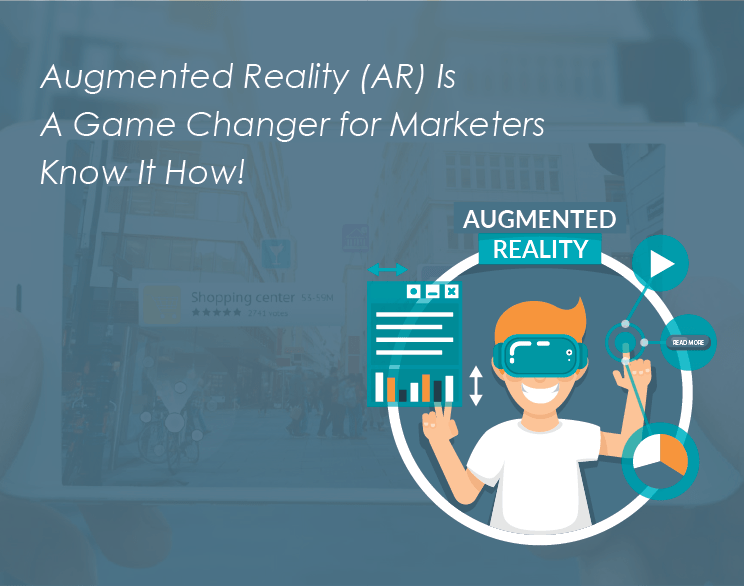Acceptance of Augmented Reality is undeviating, rising in fields like entertainment, advertising, and gaming from previous years. The wearable AR lenses entered the market in 2014. The next big thing that happened with astonishing success was Pokemon in 2016. The applicability of AR was applauded and put in use for marketing as well.
The consumers are showing interest in the new technology, and it is forecasted that 1 billion users will be there by 2020 and $2.6 billion spent by 2022. AR has generated fresh happenings in the way brands display unique, engaging, and imaginative format. The interaction with the digital world is through real-world objects. From gaming, use business houses have incorporated it in their scheme of things.
Historical Perspective
AR has survived from the time iPhone was launched in 2007. In the field of marketing, it made its appearance in 2008. BMW came out with a print ad for Mini. The 3D image of the car overlaid on the page and webcam was focused on it for results. Esquire’s issue in 2009 showed Robert Downey Jr squatting on top of an image. This was an advertisement for the movie.
AR in marketing gained ground fast in the coming decade. Till 2014 it was implicated in the action of stunts. Thus, AR was introduced in marketing. In 2015 snap lenses used this technology. The pioneer happening aided marketers to achieve scale with augmented reality. Therefore, manufacturing and engineering were transformed through:
- Measure
- Repair
- Innovation
- Collaboration
5G has entered the market in some countries. Mobile and technology will be able to transfer data rapidly for quick application at 5G locations. The AR ecosystem reality technology has four classes suited to AR apps:
- Mobile-based AR
- Head-mounted gear, for instance, Microsoft HoloLens
- Smart glasses such as Google Glass and other competing products
- AR-based on the web browser
Deeper Product Occurrence
The digital channels, as well as smartphone technology user anticipation of consumers, are elevated in the shopping experience. More information is demanded to order a product or service through the internet and retail shoppers. Marketers are compelled to provide expertise to buyers based on the latest technology.
The AR glasses, headsets, and applications can aid brands, retailers, and e-commerce. They bring a deeper look at the products as a buyer goes through different phases of the buyer’s journey. Marketers have the chance to showcase their products to clients in an enriched environment.
Irregular Information between Buyer and Seller!
Asymmetric information between buyer and seller effects compatibility. For instance, take the example of clothing. The retailer is aware as to where shirts were made, its cost, and how to calculate the profit. The consumer lacks this information. Thus, appropriate price acknowledgment is lacking for consumers, and he feels suspicious.
AR technology can change that. Now the manufacture would be able to extend correct transparency; for instance, consumer shopping for a used car. They can get immediate information through AR glasses on any specific vehicle. The AR headset will extend information on mileage, maintenance history, etc. The sales leads are quickly conveyed through technology for brisk business.
Conservative marketing channels such as TV, radio as well as search optimizer has an inbuilt problem. These may be getting linked to the correct customer but not at the most convenient place and time. Smartphone and mobile technology permit marketers to understand this problem. The approach here is based on location-based ads, promotions, and e-mail marketing. The market is flooded with messages on social media and several advertising notifications. The marketers are blocked by the noise created through social media.
AR marketers can arrive at consumers on the exact spot with demanded and required information so that they convert into buyers. For instance, a restaurant brand can demonstrate to the closest location with a map at mealtimes. This marketing strategy has brought rich dividends to many in recent times. Thus, marketing teams with AR technology will expand operations and reach, create awareness, and sales targets will be met.
AR can command products and experiences to life virtually at the location of the consumer. AR is reachable to anyone possessing an Android and iOS smartphone. The need for dedicated content management systems is urgent and time-bound. Nectar Studio has done the pioneering work of launching a complete cross-platform solution based on the accompanying app. It is the first of its kind in the world.
Application AR
AR demonstrates its usefulness in many fields.
Advertising: AR efficiency is unquestionable. AR ads are interactive and mesmeric. It does both the jobs of promoting sales and enhancing brand awareness.
Manufacturing: New technologies here create competitiveness—AR aids in increasing productivity as well as quality. The workers get help from AR gadgets to decrease human error, economize time, and enhance efficiency. Giants like General Electric, as well as Boeing, are making use of AR in manufacturing methods.
Retail: Internet shopping is trendy. It saves time and finances. However, if the delivered item does not meet the expectations of the customer, AR solves this problem. Buyers can see virtually and even try products sold through the internet.
Navigation: Virtual objects overlapping the actual world can display directions and guide for locations. Several business houses and restaurants make use of AR to direct customers to their stores.
Repairs and Maintenance: There are repairs to be done in the house. Earlier people would view videos refer to the internet or go in for professional help. The change now is making use of the special augmented application to aid repairs.
AR Development
AR has witnessed a prominent uprising in use. Companies like Google, Amazon, Apple, and Microsoft are using it. Augmented Reality Development projections state that 100 million consumers will participate in online shopping using AR by 2020. The consumer market has utilized these services in the last five years. It is because handheld devices have become technologically strong to conduct these experiences.
Augmented reality development company are exotic in the IT world. It is so because the digital transformation of business begins with AR app and development services. The practice of AR solutions pursued by an ongoing method of product evolution, delivery, and integration with the prevailing ecosystem is the way to do business. This way, companies make an entry to remain at the forefront in a competitive market.

